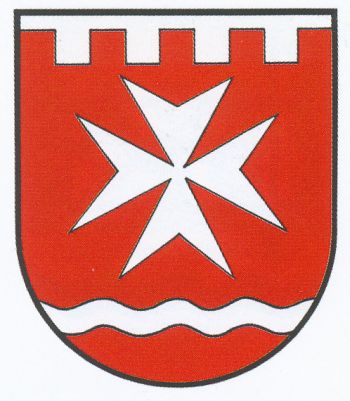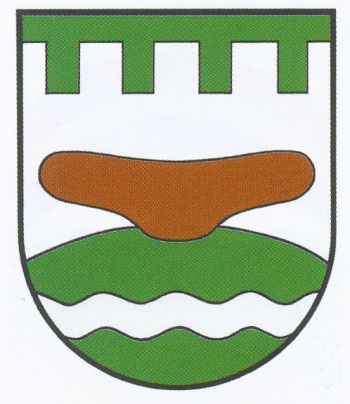Gross Steinum: Difference between revisions
Jump to navigation
Jump to search
Knorrepoes (talk | contribs) m (Text replacement - "'''↵| ↵|-↵|'''English''' ↵| {{blazon wanted}}↵|}" to "''' | blazon wanted |- |'''English''' | blazon wanted |}") |
Knorrepoes (talk | contribs) m (Text replacement - "{{media}}" to " {{de1}} {{media1}}") |
||
| Line 30: | Line 30: | ||
These arms also showed the same elements in the chief and base, but as a main charge a tumbling stone, a prehistoric monolith found on a hill near the village. | These arms also showed the same elements in the chief and base, but as a main charge a tumbling stone, a prehistoric monolith found on a hill near the village. | ||
{{ | |||
{{de1}} | |||
{{media1}} | |||
[[Civic Heraldry Literature - Germany|'''Literature''']]: Rabbow, 1977 | [[Civic Heraldry Literature - Germany|'''Literature''']]: Rabbow, 1977 | ||
Revision as of 11:28, 26 December 2022
This page is part of the German heraldry portal Deutsche Wappensammlung |
Heraldry of the World |
|
German heraldry:
|
Selected collector's items from Germany:
|
GROSS STEINUM
State : Niedersachsen
District (Kreis) : Helmstedt
Incorporated into : 1974 Königslutter am Elm
| German | blazon wanted |
| English | blazon wanted |
Origin/meaning
The arms were adopted on March 26, 1990.
The star is the symbol of the Knights of St. John, who received the village in loan from Duke Magnus von Braunschweig in 1373. The chief symbolises the former castle in the village, the base shows the Fuhse river.
The arms replaced previous arms, which were adopted on July 29, 1984.
These arms also showed the same elements in the chief and base, but as a main charge a tumbling stone, a prehistoric monolith found on a hill near the village.
Literature: Rabbow, 1977



